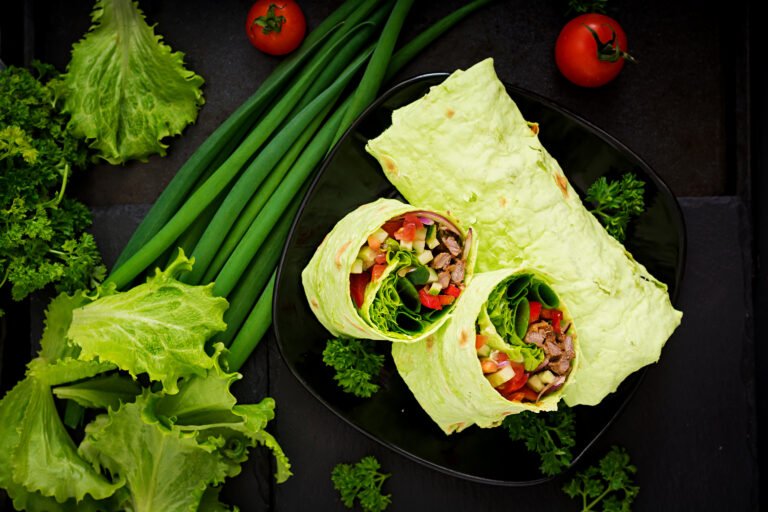FREE SHIPPING OVER $50
Yes, Diabetics Can Eat Oatmeal! Here’s How to Avoid Blood Sugar Spikes

For many people, a warm bowl of oatmeal is the quintessential comforting breakfast. But if you’re managing diabetes or prediabetes, you’ve probably heard conflicting advice or felt wary of this seemingly innocent grain. After all, it’s a carbohydrate, and carbs directly impact blood sugar. So, the big question looms: Is oatmeal good for diabetics, or is it a hidden culprit for blood sugar spikes?
Well, let’s cut to the chase and settle the debate right now: Yes, diabetics can eat oatmeal! And not just can, but should, when prepared correctly. Oatmeal is a nutritional powerhouse, offering incredible benefits like sustained energy, improved heart health, and digestive wellness. The trick, however, lies in knowing how to eat it without spiking your blood sugar.
The Oatmeal Dilemma: Why the Confusion for Diabetics?
Oatmeal’s reputation for diabetics can be a bit confusing. On one hand, it’s widely lauded as a “healthy breakfast.” On the other, many people with diabetes are told to limit carbohydrates, and oats are, by nature, a carb-rich food. This often leads to a blanket avoidance, missing out on some fantastic nutrition.
The key to understanding this dilemma lies in two main factors:
- Carbohydrate Content: Yes, oats contain carbohydrates, which break down into glucose in your body. For someone with diabetes, managing carbohydrate intake is crucial for blood sugar control.
- Type of Oatmeal and Preparation: Not all oatmeals are created equal. The way oats are processed significantly impacts their glycemic index (GI) – a measure of how quickly a food raises blood sugar.
- Steel-cut oats are the least processed, with a chewy texture and lower GI.
- Rolled oats (old-fashioned oats) are steamed and flattened, cooking faster but still retaining good fiber.
- Instant oatmeal is the most processed, often pre-cooked, dried, and sometimes loaded with added sugars, leading to a much higher GI and quicker blood sugar spikes.
So, while the confusion is valid, the solution is in the details. The real benefit of oatmeal for diabetics lies in its unique fiber profile and how you choose to prepare it.
Your Secret Weapon: Understanding Fiber (and Beta-Glucan)
The reason oatmeal can be a fantastic addition to a diabetes-friendly diet comes down to one superhero nutrient: fiber. Specifically, oats are rich in a type of soluble fiber called beta-glucan.
Here’s how fiber, especially beta-glucan, becomes your secret weapon against blood sugar spikes:
- Slows Digestion: When beta-glucan mixes with water in your digestive tract, it forms a thick, gel-like substance. This gel literally slows down the rate at which food moves through your digestive system.
- Delayed Glucose Absorption: Because digestion is slowed, carbohydrates are broken down into glucose more gradually. This means glucose enters your bloodstream at a much slower, more controlled pace, preventing those sharp, undesirable blood sugar spikes.
- Improved Insulin Sensitivity: Over time, a diet rich in fiber can help improve your body’s insulin sensitivity, meaning your cells become more responsive to insulin. This is crucial for effectively managing diabetes and even for reversing prediabetes.
- Increased Satiety: Fiber also adds bulk to your meals, helping you feel fuller for longer. This can reduce overall calorie intake and aid in weight management, which is incredibly beneficial for blood sugar control.
The Golden Rules: How to Enjoy Oatmeal Without Spiking Your Blood Sugar
Now for the actionable insights! To truly make oatmeal work for your blood sugar, focus on these golden rules for preparation and portioning.
1. Choose the Right Type of Oats
This is arguably the most critical step. Your choice of oat vastly impacts its glycemic index and your blood sugar response.
- Prioritize Steel-Cut Oats: These are the least processed. They take longer to cook but retain the most fiber and have the lowest GI. They break down slowly, leading to a gradual rise in blood sugar.
- Opt for Rolled Oats (Old-Fashioned): These are a good second choice. They cook faster than steel-cut but still offer a substantial amount of beneficial fiber and a moderate GI.
- Limit or Avoid Instant Oatmeal: While convenient, these are highly processed. They have a higher GI, are quickly digested, and can lead to rapid blood sugar spikes. Many also contain added sugars and artificial flavors.
2. Master Portion Control
Even the healthiest foods can cause problems if consumed in excess. Oatmeal is no exception.
- Measure Your Portions: A typical serving size of dry rolled or steel-cut oats is 1/2 cup (which expands considerably when cooked). This usually contains around 27-30 grams of carbohydrates. Always check the nutrition label, as brands can vary slightly.
- Adjust as Needed: Your ideal portion might be slightly more or less depending on your individual blood sugar response, activity level, and other foods in your meal. Monitor your blood sugar to learn what works best for you.
3. Power Up with Protein
Adding protein to your oatmeal is a game-changer for blood sugar control.
- Why it helps: Protein slows down the digestion of carbohydrates even further, preventing rapid blood sugar spikes. It also increases satiety, keeping you feeling full and satisfied, which helps prevent overeating later.
- Excellent Protein Add-ins:
- Greek yogurt: A dollop of plain, unsweetened Greek yogurt (or skyr) stirred in after cooking.
- Nuts and Seeds: A handful of almonds, walnuts, pecans, chia seeds, or flax seeds (more on these next!).
- Protein powder: Stir in a scoop of unflavored or vanilla protein powder (whey, casein, or plant-based) after cooking.
- Eggs: Have an egg or two cooked on the side for a complete protein punch.
4. Add Healthy Fats
Just like protein, healthy fats can significantly impact the glycemic response of your oatmeal.
- Why they help: Fats further slow down the emptying of your stomach, leading to a more gradual release of glucose into your bloodstream. They also enhance satiety and provide essential nutrients.
- Smart Fat Choices:
- Nuts and Seeds: (Again!) They provide both protein and healthy fats.
- Nut Butters: A tablespoon of natural, unsweetened almond butter, peanut butter, or cashew butter.
- Avocado: While less common, a few slices of avocado can add healthy monounsaturated fats to savory oatmeal.
5. Load Up on Fiber-Rich Toppings (Beyond the Oats)
Even though oats have great fiber, you can supercharge your meal by adding more.
- Why it helps: More fiber means more blood sugar control, improved digestion, and increased fullness. Focus on sources that are low in added sugars.
- Top Fiber Toppings:
- Berries: Blueberries, raspberries, strawberries – they are high in fiber and antioxidants, and relatively low on the glycemic index.
- Chia seeds & Flax seeds: These are tiny powerhouses of soluble fiber and omega-3 fatty acids.
- Cinnamon: This spice isn’t just for flavor; some research suggests it may help improve insulin sensitivity.
6. Be Mindful of Sweeteners and Flavors
This is where many people go wrong and turn a healthy bowl of oatmeal into a blood sugar bomb.
- Avoid Added Sugars: Steer clear of brown sugar, maple syrup, honey, or artificial syrups. These can cause immediate and significant blood sugar spikes.
- Go Natural and Low-Calorie:
- Use natural flavorings like vanilla extract or almond extract.
- Rely on the sweetness of berries.
- Add spices like cinnamon, nutmeg, or cardamom.
- If you need extra sweetness, opt for natural, zero-calorie sweeteners like Stevia or erythritol in moderation.
Sample Diabetes-Friendly Oatmeal Combos
Putting it all together can be easy and delicious! Here are a few ideas for diabetes-friendly oatmeal bowls:
- Berry-Nut Power Bowl:
- 1/2 cup cooked steel-cut oats
- 1/4 cup mixed berries (fresh or frozen)
- 1 tbsp chia seeds
- 1 tbsp chopped walnuts
- Dollop of plain Greek yogurt
- Dash of cinnamon
- Sweeten with Stevia if desired.
- Almond Butter Bliss:
- 1/2 cup cooked rolled oats
- 1 tbsp natural almond butter
- 1/4 cup raspberries
- 1 tbsp ground flax seeds
- A splash of unsweetened almond milk for creaminess.
- Savory Green Oatmeal:
- 1/2 cup cooked steel-cut oats (cooked with water or unsweetened broth)
- Handful of sautéed spinach
- 1-2 fried or poached eggs on top
- A sprinkle of black pepper and a dash of hot sauce (optional).
Conclusion
The answer is clear: Yes, diabetics can eat oatmeal! By understanding its unique nutrition profile and applying a few smart strategies, you can transform this comforting breakfast into a powerful ally in your diabetes management journey.
Prioritize steel-cut or rolled oats, master portion control, and always remember to load up on protein and healthy fats from nutritious toppings. Ditch the added sugars, and embrace the natural goodness that can keep your blood sugar stable and your body well-nourished.
Related Articles
- Dementia-Proof Your Brain: 10 Foods That Guard Your Memory (Science Reveals All!)
- The Forgetful Food List: Are These 10 Brain-Damaging Foods In Your Kitchen?
- One Tick Bite Could Make You ALLERGIC To Meat FOREVER
- Eat These 5 Foods Daily to Naturally Lower Blood Sugar & Boost Insulin Sensitivity
- Diabetes Alert: Why Sweet Drinks Are WORSE Than Solid Sweets for Your Blood Sugar (And How to Escape!)







